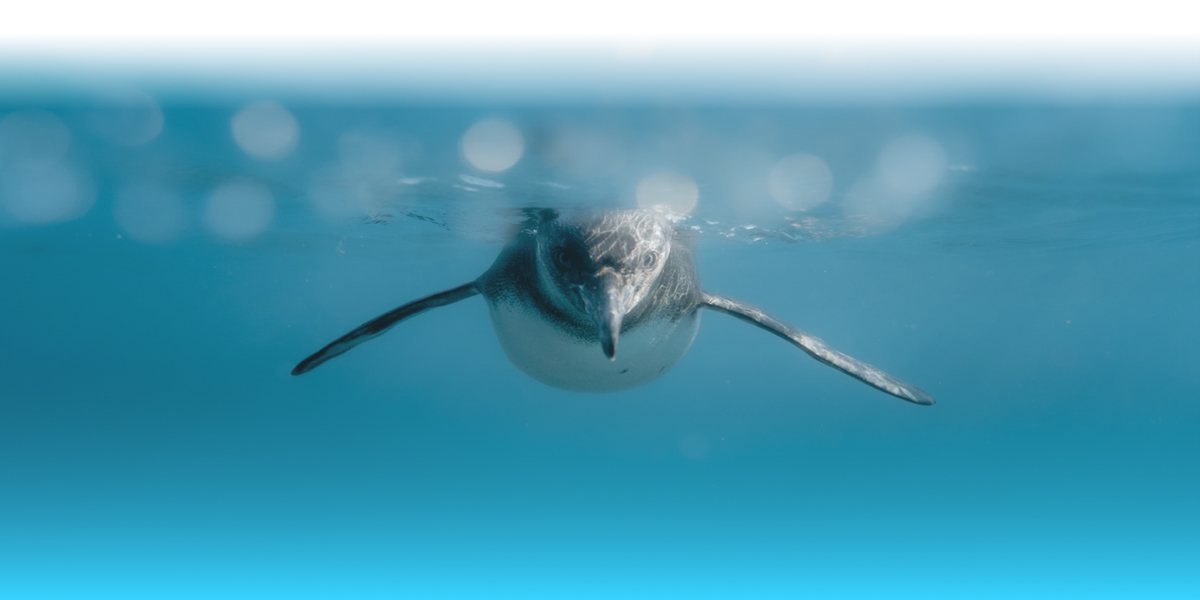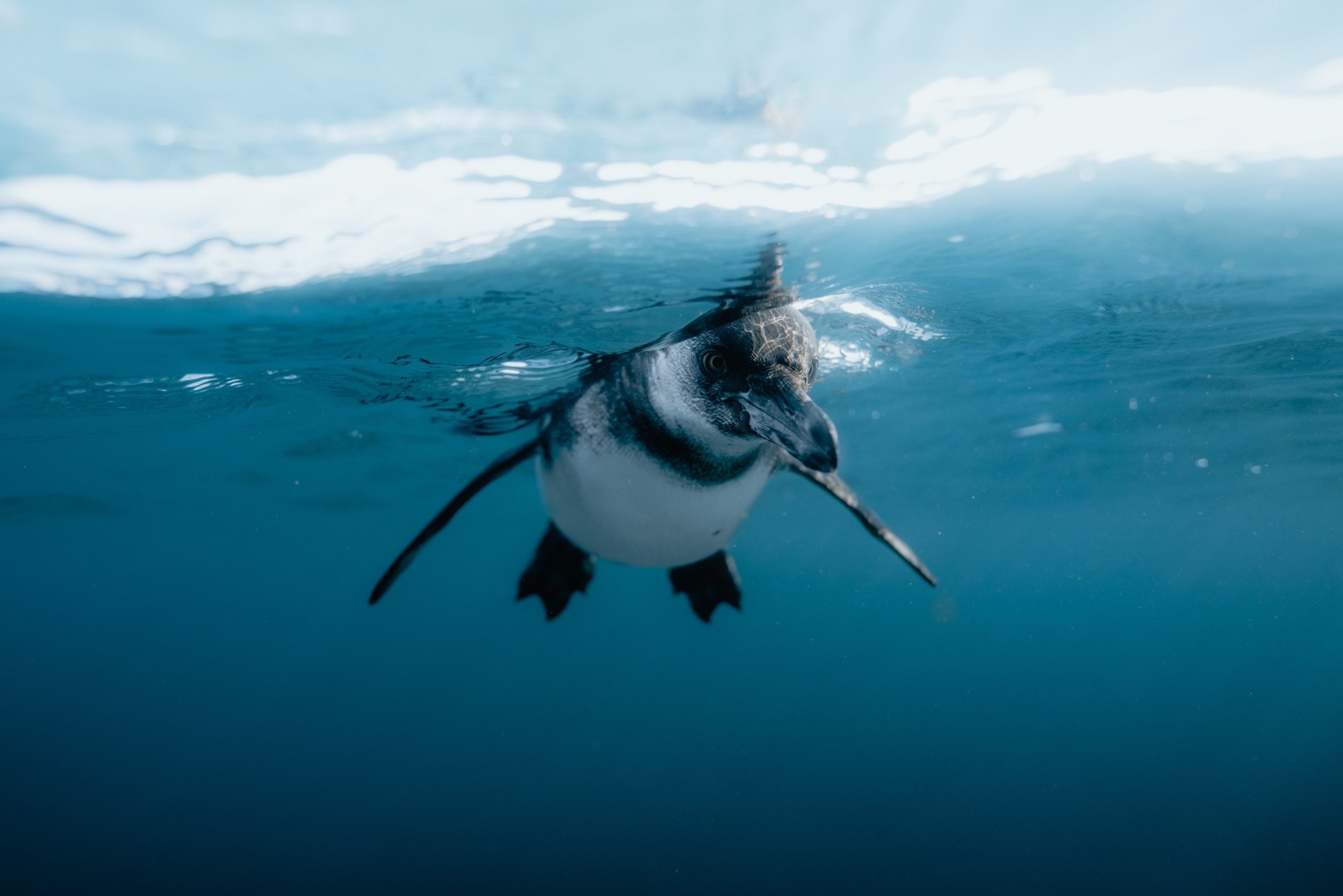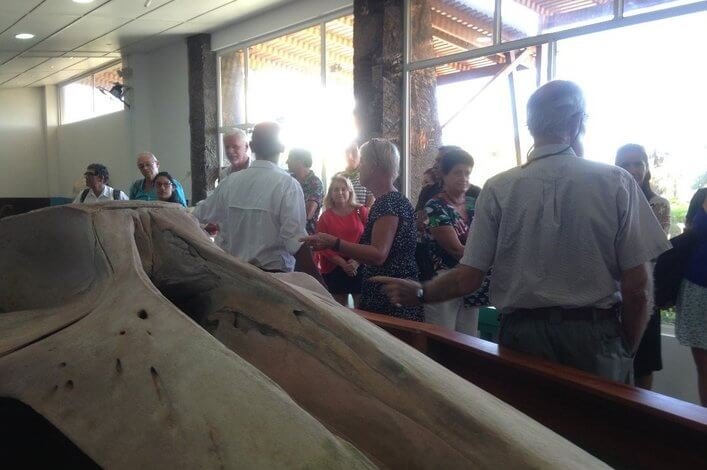
The visit to the Charles Darwin Research Station on the Island of Santa Cruz in the Galapagos is a lifetime dream for our visitors, according to Dennis Ballesteros, a Senior Guide with Metropolitan Touring, an organization that brings thousands of tourists to the islands every year. “The expectation of meeting real people who work on the ground, and to learn about their work in conservation, is a highlight for many people who come to these magical islands,” he said.
The Charles Darwin Research Station is located on the edge of the town of Puerto Ayora in Santa Cruz. The Galapagos Islands are part of Ecuador in South America, and a World Heritage Site located over 1,000 kilometres from the mainland. Established almost 70 years ago, the Charles Darwin Research Station was the first non-profit to be working in the archipelago for science and conservation. The Station has more than 18 active research projects, ranging from marine conservation and land-bird research to finding how to rid the Islands of invasive species.
Enhancing the Visitor's Experience
We opened the Charles Darwin Exhibition Hall a year ago, thanks to the support of generous donors. Here, visitors can see our unique exhibits, including the skeleton of a 13-meter Bryde´s whale and beautiful murals painted by Carlyn Iverson, an artist from the United States, and by local Galapagos artists. There is also lots of fascinating information about conservation and science projects taking place in the Galapagos.
The Research Station is surrounded by beautiful gardens with plants found nowhere else in the world.
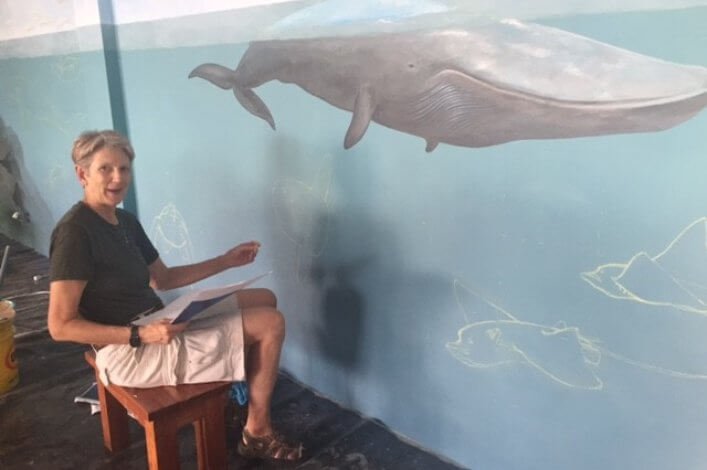
In 1965, we started the Galapagos giant tortoise captive breeding program in our Research Station, and began our collaboration with the Galapagos National Park. Together we now have a successful breeding program that is managed by the Park authority. Visitors that come to our Research Station can also visit the giant tortoise Breeding Centre right next door.
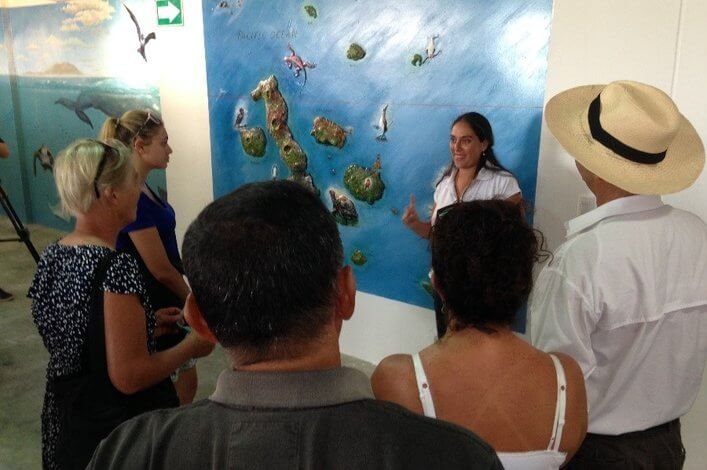
Juan Carlos Izurieta of the Tourism Observatory of Galapagos says that, of the 175,000 visitors that come through Baltra airport every year, around 120,000 visit the Charles Darwin Research Station. This is an amazing opportunity for us to talk about our conservation message.
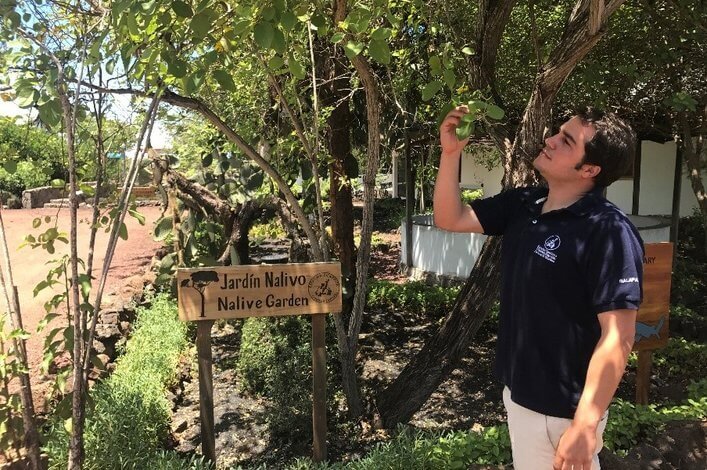
National Geographic Shares Storytelling Expertise
Among our newest visitors was a group of National Geographic experts who came to our Research Station this week for a Science Storytelling Bootcamp.
“It was inspiring for us to meet our colleagues here at the Research Station, to hear about their wonderful work and to work with them on a plan to communicate their conservation ideas and achievements with the rest of the world”, said David Braun, who is Director of Outreach for a digital publishing at the National Geographic Society.
This post was written during the workshop in which we were so lucky to receive tips from the the NatGeo team on how to communicate the amazing results of our work with a wider public.
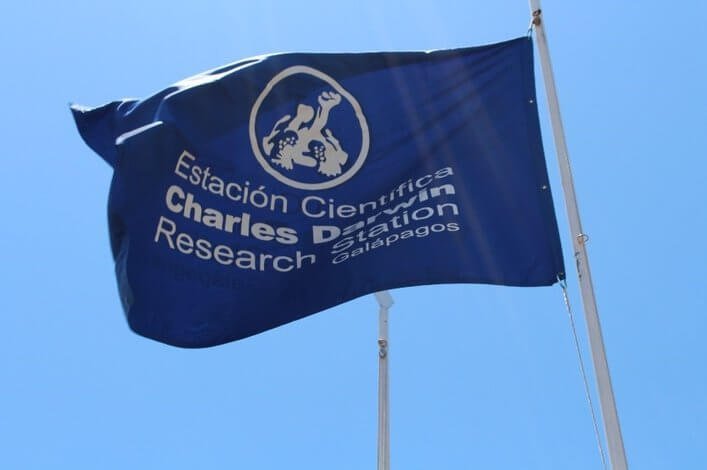
The Charles Darwin Research Station and its new Exhibition Hall depend on donations to finance the important work of conservation and protection of the natural beauty and biodiversity of Galapagos. If you would like to support our work, please visit our donations page.


